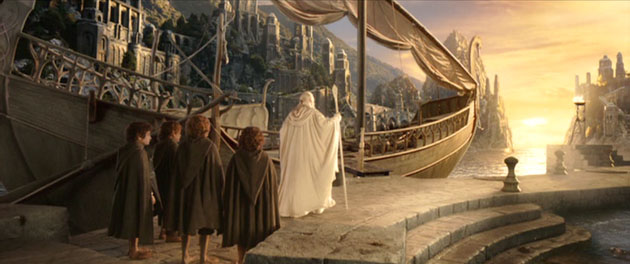Grant Major

AS: Did you do the film The Ruins to branch out?
GM: I was looking for an American film to do and it was my first American film done off-shore. It got me out of the Wellington set. And it was an adventure. It was nice to turn to something wacky like horror with poisonous vines.
AS: Was that hard to convince production to build the entire Mayan temple?
GM: It was a decision to go to Australia and they don’t have that sort of thing there. For practical reasons we made it in two halves. We made the bottom two-thirds and then the top third was made that rose up off the ground by quite a long way. We also built various interior sets which you didn’t see much of because there was not enough light.
AS: Do you feel a set can be a character in a movie? In The Ruins that temple almost becomes more than a set.
GM: Absolutely. Absolutely. It’s not just a temple, it has to be part of the storytelling narrative. That’s really important to me. All the decisions are made in terms of the story and the drama.
AS: Do you have any thoughts about sets needing to be visible versus invisible?
GM: Neither one of them. Where it needs to tell a story it’s got to be seen for what it is. For example, the great big underground laboratory in Green Lantern has to be seen because it’s very much described in the script. Other ones, like people’s offices, rooms, bedrooms and so on, they want to play a support role to the drama that’s being played out by the actors. So it really depends on the brief in a way, on the script. At the end of the day people are really taking in a lot by osmosis. For the osmosis to be readable it still needs to impress itself on people’s imagination even if it’s indirectly.
AS: On Lord of the Rings you worked with Alan Lee and John Howe, how involved were they in developing the look of the films?
GM: Majorly so. With regular American films you hire a production illustrator or concept artist and they are incredibly skilled but they often have a sort of a style and an imaginary vocabulary that’s quite recognizable. You see it come through a lot on films. But Alan Lee and John Howe came from the publishing world and had both independently developed idiosyncratic styles to their illustrations. Alan’s been around for way longer than I’ve been designing for. They had been used by these publishers for a lot of classic English stories, including The Lord of the Rings. They developed the look of the book. Alan had illustrated The Lord of the Rings for years before the this film project even started, likewise John Howe had been doing these ancient old English and old European sword and sorcery stories for a living for a long time. They were picked up by us in the very early days and as a way of staying very close to the established look of the book. When they came over it was fantastic because with the book illustrations they just did a moment in the story but this time we were doing what Rivendell really looks like, for example.
We did have other artists who were working on the films and past a point an illustration is just what it is, it’s something that has to be made into something that’s filmable and buildable and buyable. We had to be able to make the business side of it work, we had to be able to physically manifest these things on a location or a studio. We had 300-400 people in the design department but Alan and John where key roles in the sharp end of the look of it. It was a brilliant choice for them to be on.
Tom, this is a wonderful blog, thanks for the info.
Do you have any advice for aspiring production designers? I live in Philadelphia and recently finished architecture school but I very much want to design films.
Glad to hear you like the blog! The best advice I’ve found is to just get out there and start doing it. Work on low budget videos, short films, commercials, anything you can get your hands on for low money. A lot of these directors will call you when they start doing features. And then call you again when the features get bigger budget. K.K. Barrett started with commercials and music videos for Spike Jonze, Grant Major started on smaller movies with Peter Jackson, and Jack Fisk rented a van and brought his own tools out to Colorado to go do Terence Malick’s Badlands. He not only found an auteur to work with throughout his career, he also met his future wife, Sissy Spacek.
Also, you may want to move to LA or New York or anywhere there are schools like USC, AFI, NYU where talented directors are just starting out and looking for designers….
Pingback: STH032: Gandalf the Stern « SQPN: Secrets of The Hobbit
Thanks so much for the response.
I’m actually working on a short film with an old friend of mine who just graduated from USC and is trying to become a director so I guess I am on the right track! He lives in and will be shooting the film in San Diego but we’ve been able to work together so far by way of email and it’s been a lot of fun. I guess I will see what comes of it! If nothing else I’ll have some material to add to my portfolio.
Thanks again!
Pingback: Laurence Bennett
Pingback: Rick Heinrichs
Pingback: STH032: Gandalf the Stern - SQPN.com